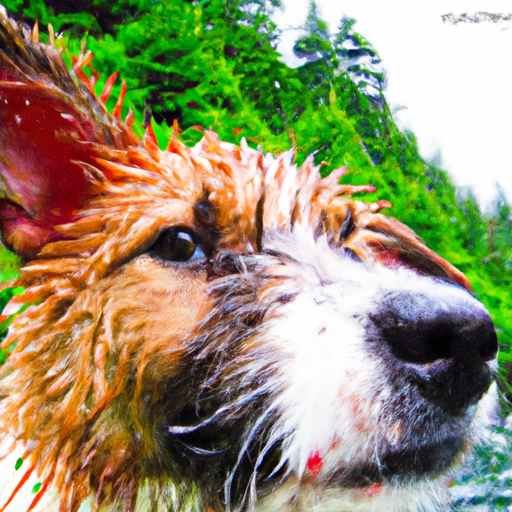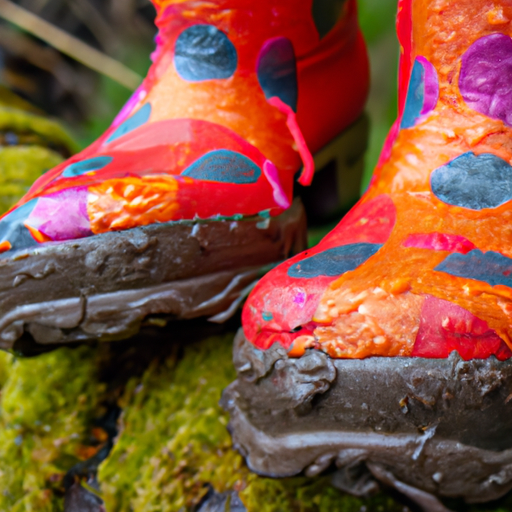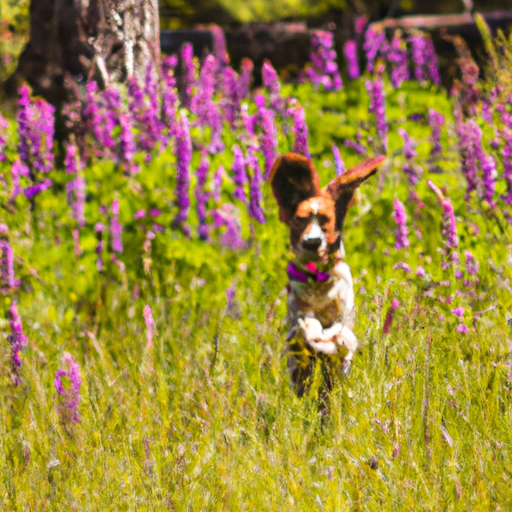If you're a proud owner of a 7-8-month-old puppy, you may be wondering about the ideal exercise routine for your furry friend. Like humans, puppies also need physical activity to ensure their overall health and well-being. In this article, we will explore the recommended exercise routine for a 7-8-month-old puppy, taking into consideration their age, breed, and individual needs. From playtime to walks, we'll guide you on providing your energetic companion with a balanced and enjoyable exercise routine that will keep them happy and healthy.
Exercise Frequency
It is important to establish a regular exercise routine for your 7-8-month-old puppy. Aim for at least 30 minutes to an hour of exercise each day, depending on your pup's energy levels and breed. It is crucial to strike a balance between providing sufficient physical activity and avoiding overexertion.
Duration of Exercise
When it comes to the duration of exercise sessions, it is best to start with shorter bursts of activity and gradually increase the time as your puppy builds endurance. Begin with 10 to 15-minute walks or play sessions, and incrementally extend the duration to 30 minutes or more. Remember, every pup is different, so monitor your puppy's energy levels and adjust accordingly.
Number of Exercise Sessions per Day
Although it is essential to provide regular exercise, it is equally important to avoid excessive strain on your puppy's developing body. Aim for two to three exercise sessions throughout the day, allowing them time to rest and recover in between. Splitting exercise sessions into smaller increments promotes better energy management and avoids pushing your puppy beyond their limits.
Types of Exercise
Engaging in a variety of exercises helps stimulate different muscles and enhances your puppy's overall fitness. Here are some exercises that are suitable for your 7-8-month-old pup:
Walking
Walking is an excellent low-impact exercise option for young puppies. Take your furry friend on daily walks, gradually increasing the distance as they grow stronger. It not only provides physical exercise but also mental stimulation through new sights, smells, and interactions with the environment.
Running
If your veterinarian gives the green light, light jogging or running can be incorporated into your pup's exercise routine. However, remember to take it slow and start with shorter distances. Only increase the intensity and duration of the runs as your puppy continues to grow and develop.
Playing Fetch
Playing fetch is a fantastic way to engage your puppy in a fun and interactive exercise activity. Use soft toys or balls specifically designed for dogs to avoid any harm or injury. Start with gentle throws, gradually increasing the distance as your puppy becomes more comfortable with the game.
Swimming
Swimming is a low-impact exercise that is gentle on your puppy's joints. If weather permits and you have access to a safe and clean swimming area, it can be a great way to provide both physical and mental stimulation for your pup. Supervise your puppy closely and ensure they are comfortable with water before introducing them to swimming.
Exercise Intensity
While exercise is crucial, it is important to pay attention to the intensity of the activities your puppy engages in. Consider the following factors to ensure the exercise routine is safe and suitable for your 7-8-month-old pup:
Moderate Intensity
Focus on exercises that promote moderate intensity rather than high-impact activities. Puppies are still growing, and excessive impact can lead to developmental issues. Activities like walking, running, and swimming at a moderate pace are ideal for strengthening muscles and improving cardiovascular health.
Avoid High Impact Activities
Jumping and activities that involve excessive twisting or turning should be avoided. The still-developing joints and bones of your puppy are more susceptible to strain or injury. Limit activities such as jumping over obstacles or engaging in intense agility training until your puppy is fully matured.
Avoid Excessive Jumping
While puppies are naturally inclined to jump and play, overdoing it can put unnecessary stress on their young bodies. Avoid activities that involve repetitive jumping or landing on hard surfaces. Opt for gentler exercises, like controlled jumps over low obstacles or using designated puppy-safe equipment.
Exercise Environment
Creating a safe and secure exercise environment is crucial to ensure your puppy's well-being and encourage positive exercise experiences. Consider the following factors when setting up an exercise space for your 7-8-month-old pup:
Secure and Safe Areas
Always exercise your puppy in a secure and fenced area to prevent them from wandering off or getting into dangerous situations. Remove any potential hazards, such as toxic plants or objects that your pup may chew on, to ensure their safety during exercise.
Avoid Overstimulation or Overexertion
Puppies can easily become overwhelmed by excessive noise or crowded environments. When choosing exercise areas, opt for quieter spaces with minimal distractions. This will help your puppy focus on the exercise routine and prevent sensory overload, which could lead to anxiety or fear.
Provide Mental Stimulation
In addition to physical exercise, it is important to provide mental stimulation for your young pup. Incorporate interactive toys, puzzle toys, or treat dispensers into your exercise routine. These activities engage your puppy's mind and prevent boredom, making the exercise session more enjoyable and rewarding for them.
Socialization and Training
Exercise is not only about physical activity but also about providing socialization opportunities and mental enrichment. Here are some considerations when it comes to socialization and training during exercise:
Positive Social Experiences
During exercise sessions, try to expose your puppy to positive social experiences. This can include controlled interactions with other friendly dogs or supervised meetups with well-behaved adult dogs. Socializing your puppy helps develop good behavior and ensures they feel comfortable and confident around other animals and humans.
Basic Command Training
Incorporate basic command training into your exercise routine to work on obedience and mental stimulation. Practice commands such as “sit,” “stay,” or “heel” during walks or play sessions. This teaches your puppy valuable skills and helps to establish a stronger bond between the two of you.
Managing Energy Levels
Puppies have abundant energy, and it's important to provide them with appropriate outlets to prevent destructive behavior. Consider the following strategies to manage your pup's energy levels effectively:
Provide Mental and Physical Challenges
Engage your puppy in activities that provide both mental and physical challenges. Incorporate games like hide-and-seek, puzzle toys, or agility exercises. These activities keep your pup mentally sharp while also tiring them out physically.
Use Puzzle Toys and Treat Dispensers
Puzzle toys and treat dispensers are excellent tools to keep your puppy entertained and mentally stimulated. These interactive toys require problem-solving skills and encourage your pup to work for their treats. Make use of these toys during rest periods, ensuring your puppy gets a chance to recharge, mentally and physically.
Rotate Toys and Activities
To prevent boredom and keep your puppy engaged, regularly rotate their toys and activities. Introducing new toys and games prevents your puppy from getting tired of the same routine. This also adds variety to their exercise sessions, making them more enjoyable and stimulating.
Health Considerations
Taking care of your 7-8-month-old puppy's health is crucial during their exercise routine. Consider the following health considerations:
Consult with Veterinarian
Before starting or modifying your puppy's exercise routine, consult with your veterinarian. They can provide personalized advice based on your puppy's breed, size, and overall health. They may also recommend additional precautions or exercises specific to your pup's needs.
Monitor for Signs of Fatigue or Overexertion
While exercise is important, it's equally important to monitor your puppy for signs of fatigue, overexertion, or any abnormalities during or after exercise. Slow down or stop the activity if you notice excessive panting, limping, or any distress. Pay attention to your pup's cues and modify the routine accordingly to ensure their well-being.
Nutrition and Hydration
Proper nutrition and hydration are essential to support your puppy's growth and energy levels. Consider the following aspects:
Balanced Diet for Growth
Feed your puppy a balanced and age-appropriate diet to support their growth and development. Consult with your veterinarian to determine the appropriate portion sizes and the best type of food for your puppy's breed and individual needs. A nutritious diet provides the necessary fuel for your puppy's exercise routine.
Ensure Ample Water Availability
During exercise, ensure that your puppy has access to fresh water at all times. Hydration is crucial to prevent overheating and maintain your pup's overall health. Carry a portable water bottle and a small bowl when going for walks or other outdoor activities.
Rest and Recovery
Just like humans, puppies need sufficient rest and recovery time after exercise. Here are some considerations to promote adequate rest and recovery:
Adequate Rest Periods
Allow your puppy plenty of rest periods throughout the day to recover from exercise sessions. Provide a quiet and comfortable space where they can relax and recharge. This helps prevent exhaustion and aids in the growth and repair of their muscles and joints.
Quality Sleep Environment
Create a comfortable and quiet sleep environment for your puppy. Ensure they have a cozy bed or crate in a calm area of your home. Puppies need more sleep than adult dogs as it is essential for their growth and development. Make sure they have a safe and peaceful place to get the quality sleep they need.
Monitoring Growth and Development
Regularly monitoring your growing puppy's growth and development is vital for their overall well-being. Consider the following steps:
Regular Vet Check-ups
Schedule regular check-ups with your veterinarian to track your puppy's growth and address any concerns. They will monitor your pup's weight, body condition, and overall health, ensuring they are on the right track. This allows for early detection of any health issues and ensures appropriate adjustments are made to their exercise routine if needed.
Assessing Weight and Body Condition
Observe your puppy's weight and body condition on a regular basis. A healthy weight and body condition are essential for their overall development. Check for visible signs of a healthy weight, such as a slight waistline and being able to feel their ribs with gentle pressure. If you have any concerns, consult your veterinarian for guidance.
In conclusion, establishing an appropriate exercise routine for your 7-8-month-old puppy is essential for their physical and mental well-being. Incorporate a variety of exercises, prioritize moderate intensity, provide a safe environment, encourage socialization and training, manage energy levels effectively, consider health considerations, maintain a balanced diet, ensure ample rest and recovery, and monitor your pup's growth and development. By following these guidelines, you can help your puppy grow into a happy and healthy adult dog.






